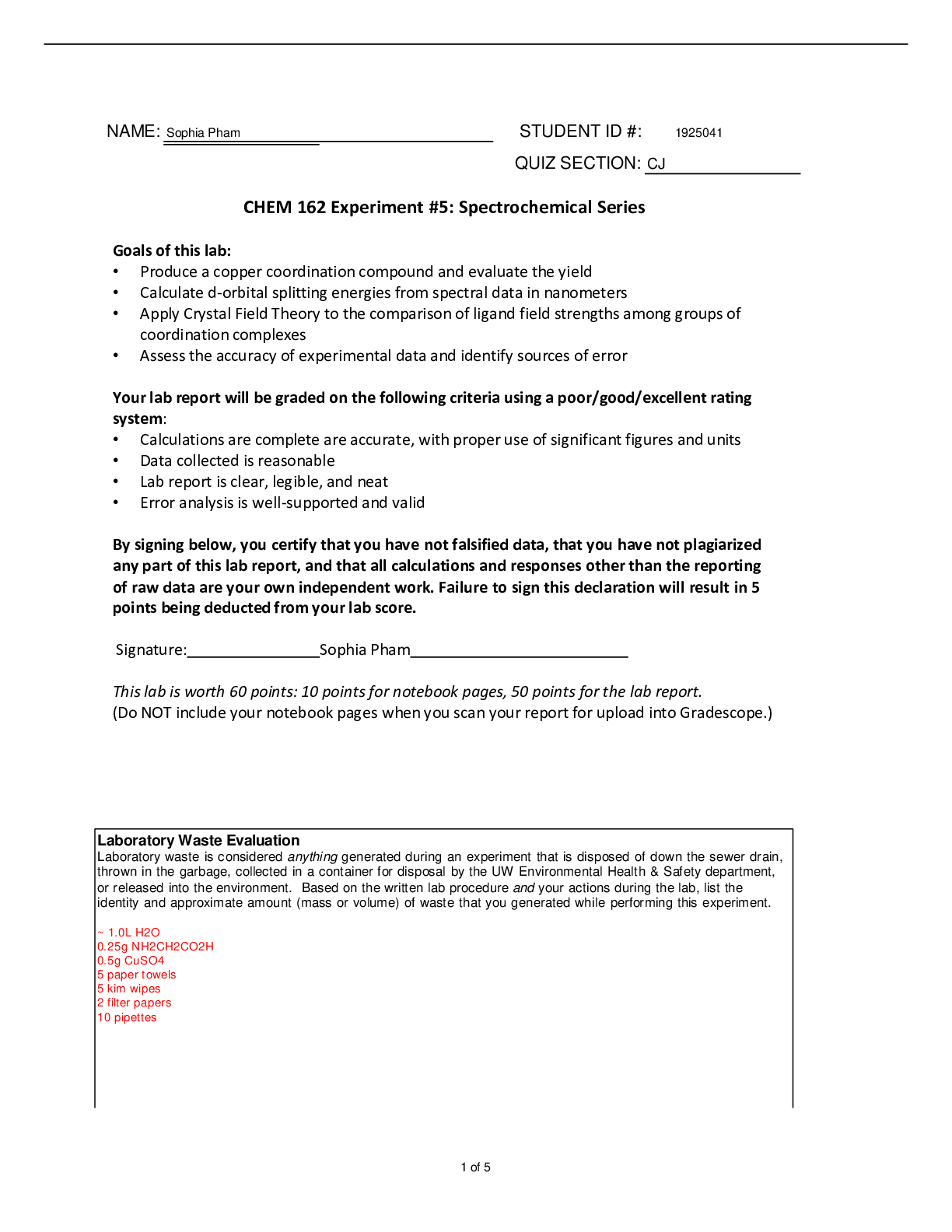Biology > Lab Report > Cray Fish Heart Rate Lab Report University of North TexasBIOL 4510Insect Metabolism Lab Report (Fina (All)
Cray Fish Heart Rate Lab Report University of North TexasBIOL 4510Insect Metabolism Lab Report (Final) (2)
Document Content and Description Below
Cray Fish Heart Rate Lab Report Eunji You Course and Section: BIOL 4510 Animal Physiology Laboratory - Section 503 Class on: Tuseday @ 9:00-12:00 PM Date report submitted: 11/05/19 Lab TA: Wren B ... usby Lab Mates: Erica Huang Introduction Back ground Insects such as crickets are considered as poikilotherms (animals that maintain the internal temperature similar or slighter higher than the external environment temperature). A term that refers to the animals belonging to the crawfish in the arthropod deciduous tree. There are many varieties of crayfish that can be seen in freshwater and sea. A total of 20 body, 5 in the head, 8 in the chest, and 7 in the belly. The head and chest carapaces fuse to form the head chest. The node of the head has the first tactile sense, the second tactile sense, the big jaw, the first loudness, and the second loudness in order. The upper part of the head protrudes from the shell, which is called the forehead. The heart is located in the dorsal part of the cephalothorax. The impedance of the circuit will change as the heart beat and this allows to measure the heart rate of crayfish. Purpose Our purpose was to measure the crayfish heart rate under the effects of stressed, serotonin, acetylcholine , cold and epinephrine. Hypothesis You 2 A crayfish hearts are neurogenic. It means that their heartbeat is controlled by CNS. Endogenous neurotransmitter regulating heart rate in inverts and will regulate the rate of contraction. Serotonin increase heart rate and force of contraction. Acetylcholine and Epinephrine is also neurotransmitters. It will increase heart rate and force of contraction in inverts. Also a crayfish are poikilotherms. So in the cold environment their heart rate will decrease. Materials and Methods In this insect metabolism experiment, the control groups were crickets (6.5 grams-approximately 25 crickets/metabolic cage) placed in three metabolic cages. The first cage was covered with tissue paper to create a stress-free environment. The second cage contained crickets with a control temperature of approximately 21 degr [Show More]
Last updated: 3 years ago
Preview 1 out of 7 pages

Buy this document to get the full access instantly
Instant Download Access after purchase
Buy NowInstant download
We Accept:

Reviews( 0 )
$9.00
Can't find what you want? Try our AI powered Search
Document information
Connected school, study & course
About the document
Uploaded On
Jun 15, 2021
Number of pages
7
Written in
All
Additional information
This document has been written for:
Uploaded
Jun 15, 2021
Downloads
0
Views
130

.png)


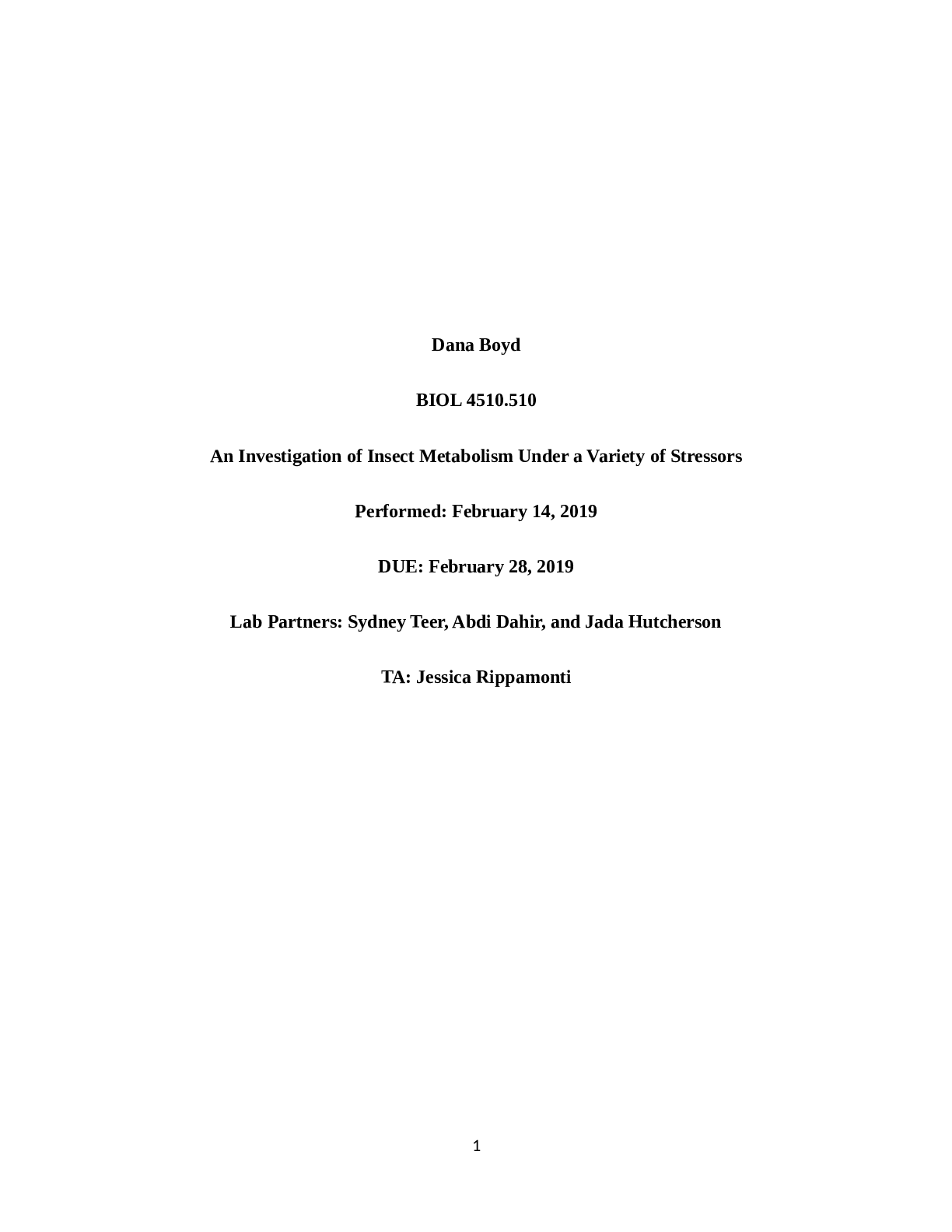



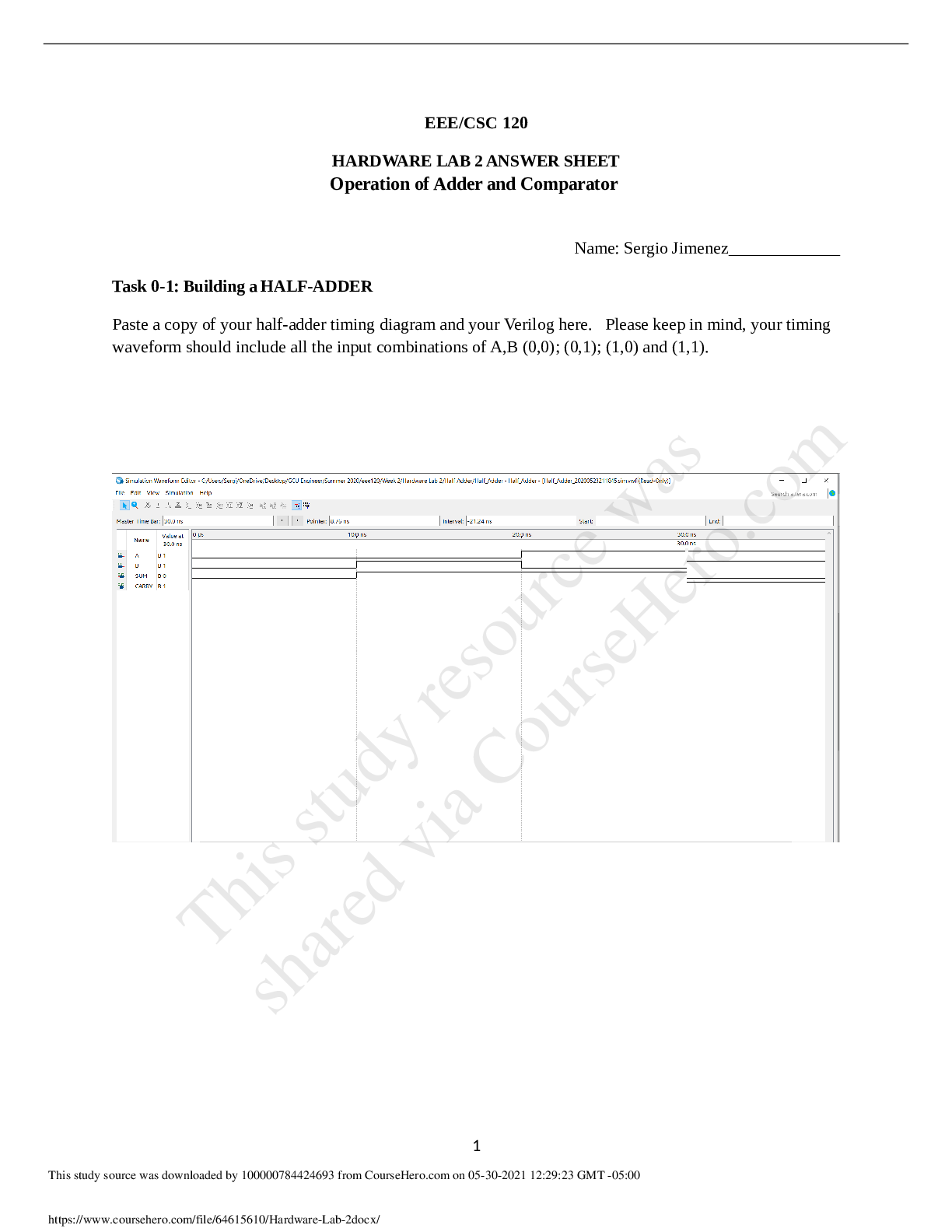



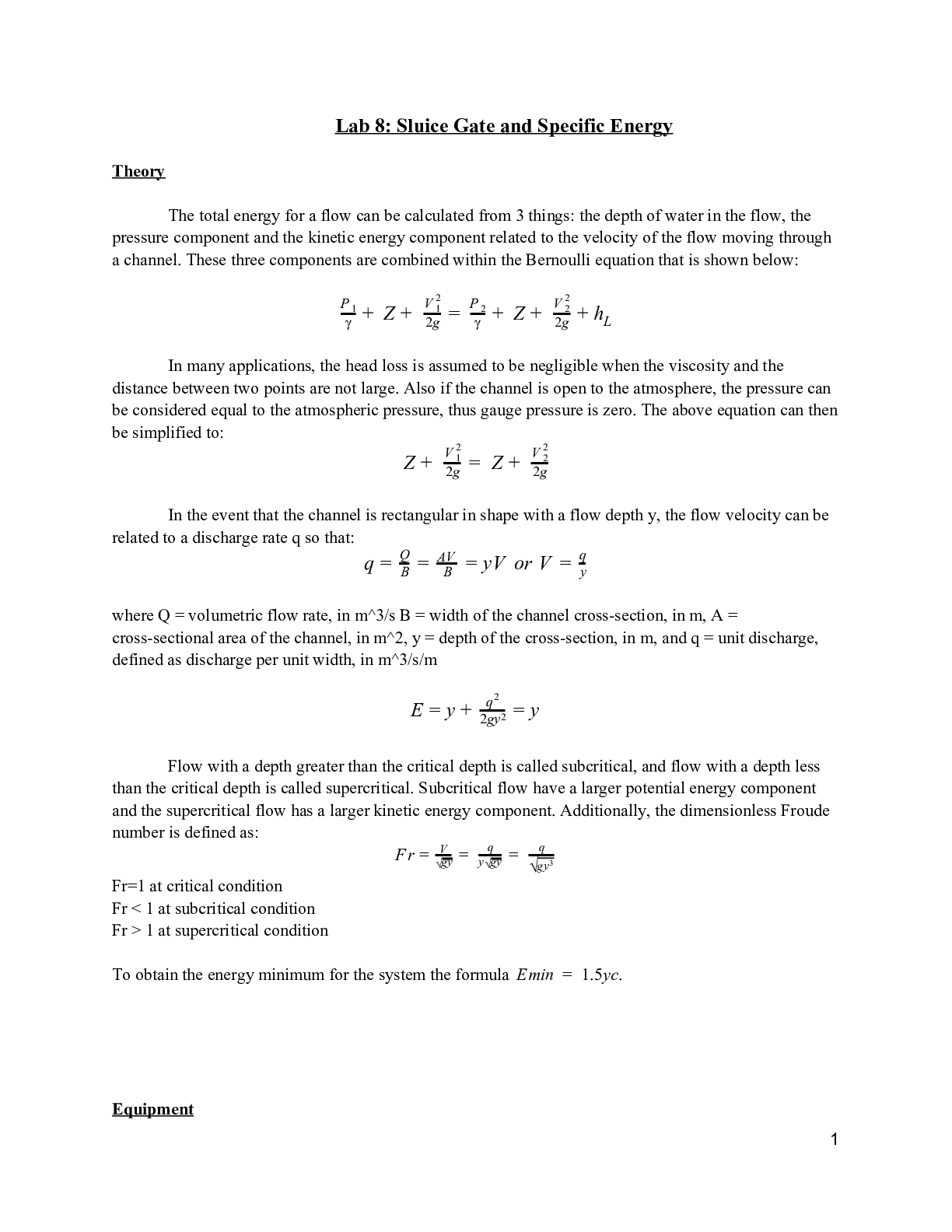
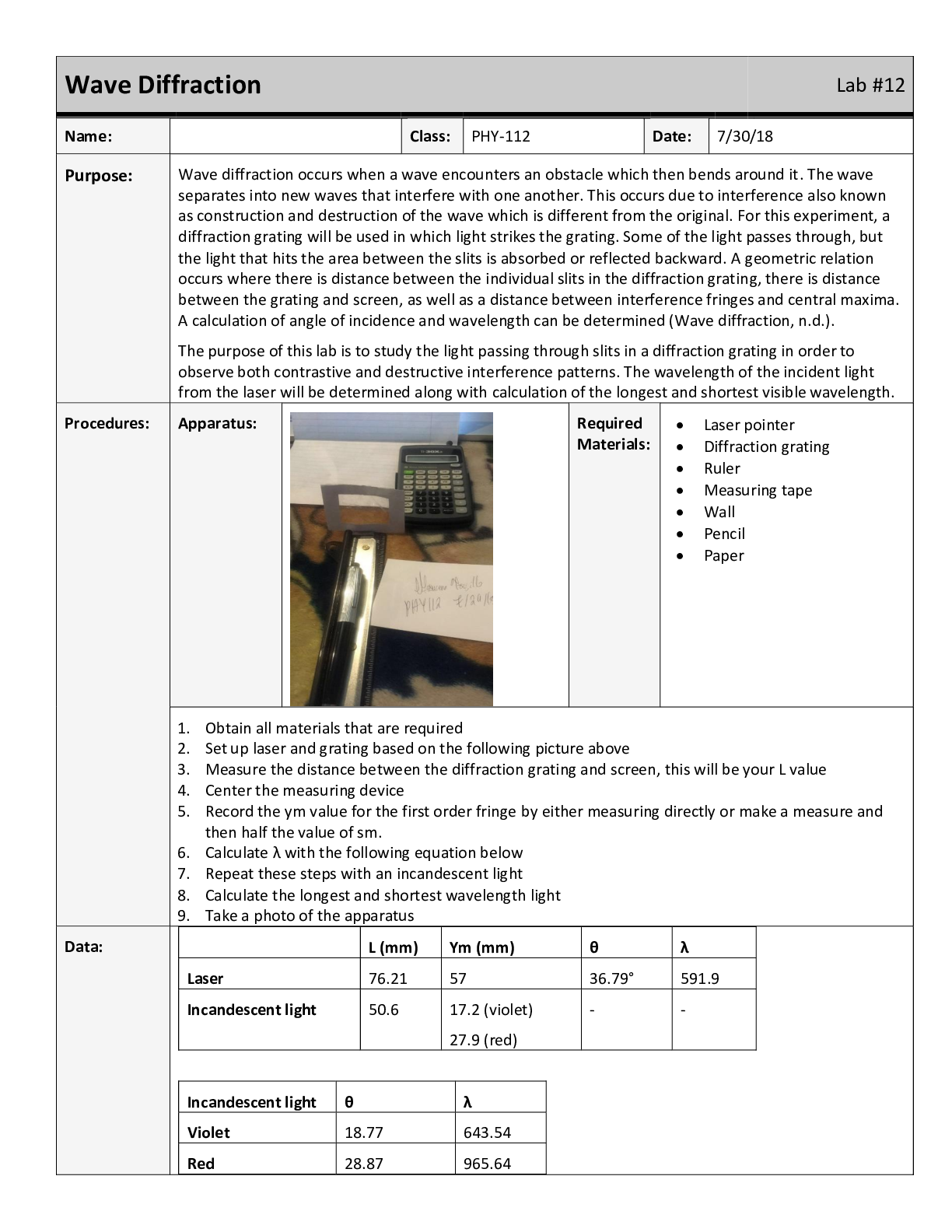

.png)

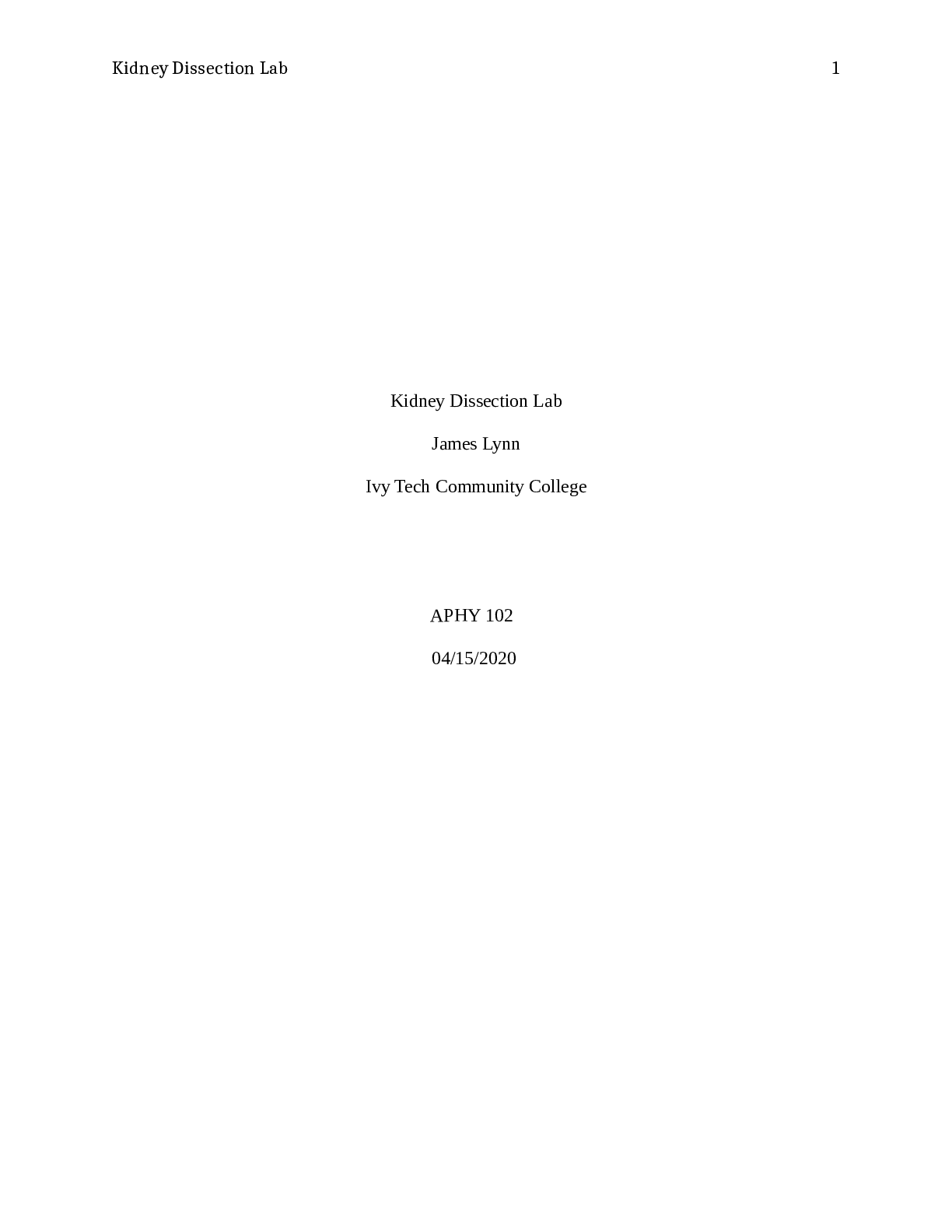



.png)

